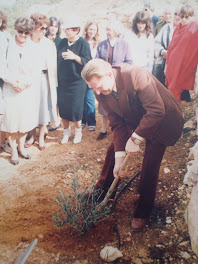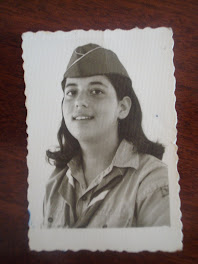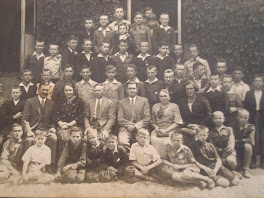TEXTS FROM OFFICIAL WARSAW UPRISING MUSEM SITE : www.1944.pl
The beginning
On September 1, 1939, in accordance with the Ribbentrop–Mołotow pact signed in August 1939, which divided Poland between the aggressors on the line of the rivers Narew, Wisła and San, the Third Reich attacks Poland by land, sea and air. Yet another world war becomes a reality. On September 3, France and Great Britain, in alliance with Poland, declare war on Germany, but do not get militarily involved. Despite determined resistance, the overwhelming German forces quickly advance, crushing the Polish army on their way. On September 6, the Polish army is ordered to retreat behind the Wisła-San line, and two days later Germans reach Warsaw. On September 17, 1939, the Soviet Union joins Germany, violating former agreements with Poland: “If there is no government in Poland anymore, there is no non-aggression pact either” – Polish Ambassador Wacław Grzybowski is told in Moscow. After the Soviet aggression, subsequent points of resistance fall: Oksywie (September 19), Warsaw (September 28), Modlin (September 29), Hel (October 2). The last regular troops of the Polish Army under the command of Gen. Franciszek Kleeberg surrender near Kock on October 5, 1939. The occupation begins. Its cruelty exceeds everything that Poles have experienced over past centuries of Prussian and Russian servitude. On the basis of the pact signed on September 28, the two occupants divide the territory of Poland into two approximately equal parts. On October 12, Germans create the “General Government of the occupied Polish territory” covering an area of 98 thousand km2 and divided into four districts: Kraków, Radom, Lublin and Warsaw. The Soviets incorporate the seized territory into the Ukrainian and Byelorussian Soviet Republics. Lithuania is granted the Wilno district, and part of the Polish Carpathians is incorporated into Slovakia. Both occupants introduce the policy of extermination of Polish leaders. From the very first days there are numerous carefully planned deportations, expulsions, various types of persecution, administrative harassments and executions. The requisition of private property becomes common. Food supply disturbances threaten the biological existence of the whole nation. For the smallest offenses one can be punished with death, imprisonment or internment in a concentration camp. The first camp – Stutthof – is established as early as 1939, to be followed by Auschwitz-Birkenau (1940), Majdanek (1941), Płaszów (1944) and others. The existing social and moral order collapses. Polish syllabuses are forbidden and on the German-occupied territory school education is limited to an absolute minimum. The Soviets try to keep up appearances by allowing Polish as the language of instruction – but in return there is intense communist indoctrination. Denunciations become common. On the areas occupied by the Germans, Jews are particularly persecuted. The Germans force them to live in ghettos: the first was created in October 1939 in Piotrków Trybunalski, the next in Łódź in 1940, and yet another in October 1940 in Warsaw. Starting in December 1941, the Germans murder Jews in extermination camps in Chełmno, Sobibór, Bełżec, Treblinka, and Auschwitz-Birkenau. On the Polish territory controlled by the Soviet Union, the aggressor tries to ignite antagonisms between the nationalities living there, skillfully provoking conflicts between Ukrainians, Jews, Byelorussians and Poles, who are treated as an ideologically hostile element.
Terror in Warsaw
Being the capital and the biggest city (about 1.3 million inhabitants in 1939), Warsaw is a symbol of resistance and the center of the underground independence movement. It becomes the target of the main German attack. Arrests, executions and mass murders in the city increase (Wawer 1939, Palmiry 1939/1940, Kabacki Forest 1939/1940, Sękociński Forest 1942). From the end of 1943 till the summer of 1944, about 4,300 inhabitants of Warsaw, mostly representatives of the nation’s elite, are killed. Street roundups shatter the sense of security. From October 1941, under the penalty of death Jews are not to leave the ghetto, nor are Poles allowed to offer them help.
Warsaw 39’
The first German bombs fall on Warsaw at the moment of the outbreak of war. Air raids on the capital continue throughout the month. On September 17, the Royal Castle is set ablaze. The heaviest air raid takes place on September 25. Approximately 350 bombers take part in the bombardment. Almost 630 tons of demolition and incendiary bombs fall on Warsaw. About 200 fires burst out in the city. Public buildings, in spite of marking-churches, residential buildings, even hospitals them with the Red Cross symbol - are in flames. During the siege in September 1939, 12 per cent of Warsaw’s buildings are destroyed.
The joy of the very first days
The citizens of Warsaw welcome the Rising with enthusiasm. After nearly 5 years of occupation Warsaw is a free city. National flags are hung on buildings and patriotic songs are played from street loudspeakers. Home Army soldiers can hear words of support at every turn. Varsovians provide them with food and cigarettes and hand out flowers. They help to take care of the wounded. They build barricades on the streets and point out enemy positions. “Warsaw began and led a deathly struggle in isolation, yet her soldiers were not alone” – writes Adam Borkiewicz, the first historian of the Rising.
Comparisons of Forces
Home Army forces in the Warsaw District number about 45 thousand soldiers. Soldiers from the National Armed Forces, Internal Security Corps, Polish People’s Army and People’s Army also join the Rising. Together they number about 2.5 thousand. The insurgent’s main problem is a lack of weapons. They are supplemented with weapons produced by the insurgents themselves, weapons captured from the enemy and airdrops. Polish and allied pilots together with soldiers from Berling’s Army come to help. They have to face well-trained German formations of about 25 thousand people. Armed to the teeth, they are supported by artillery, panzer divisions and the air force.
TEXTS FROM OFFICIAL WARSAW UPRISING MUSEUM SITE : www.1944.pl
Read more in english http://www.1944.pl/?lang=en















